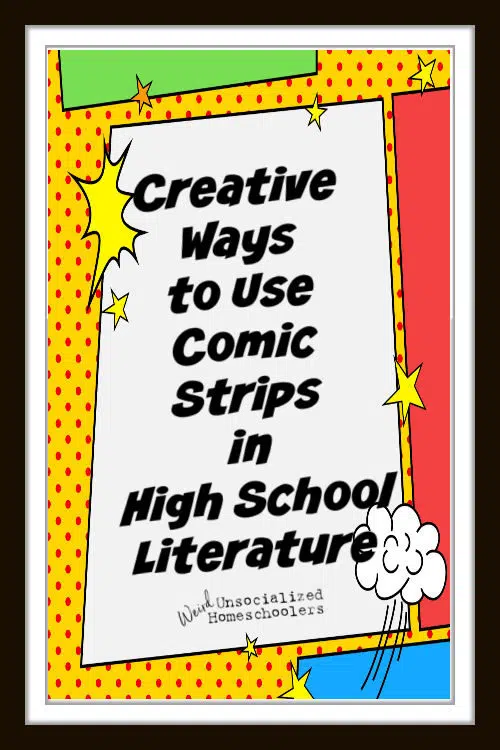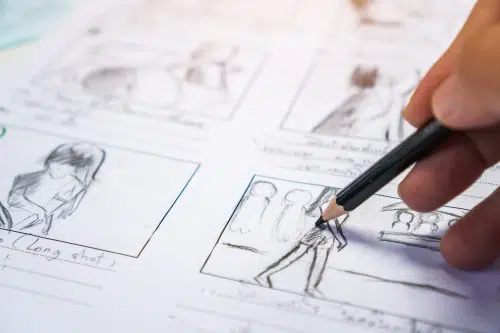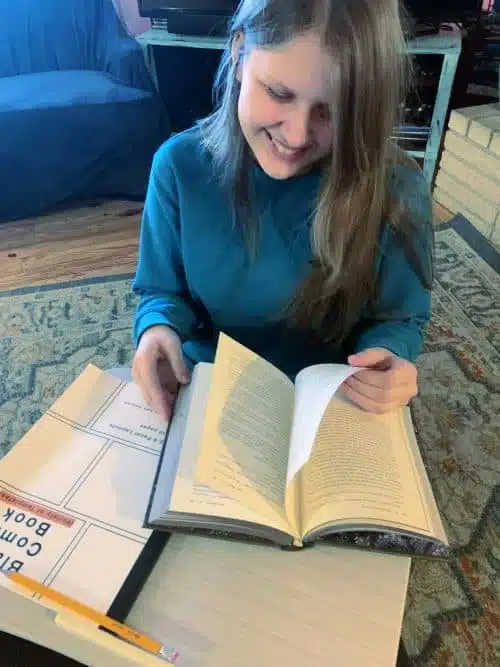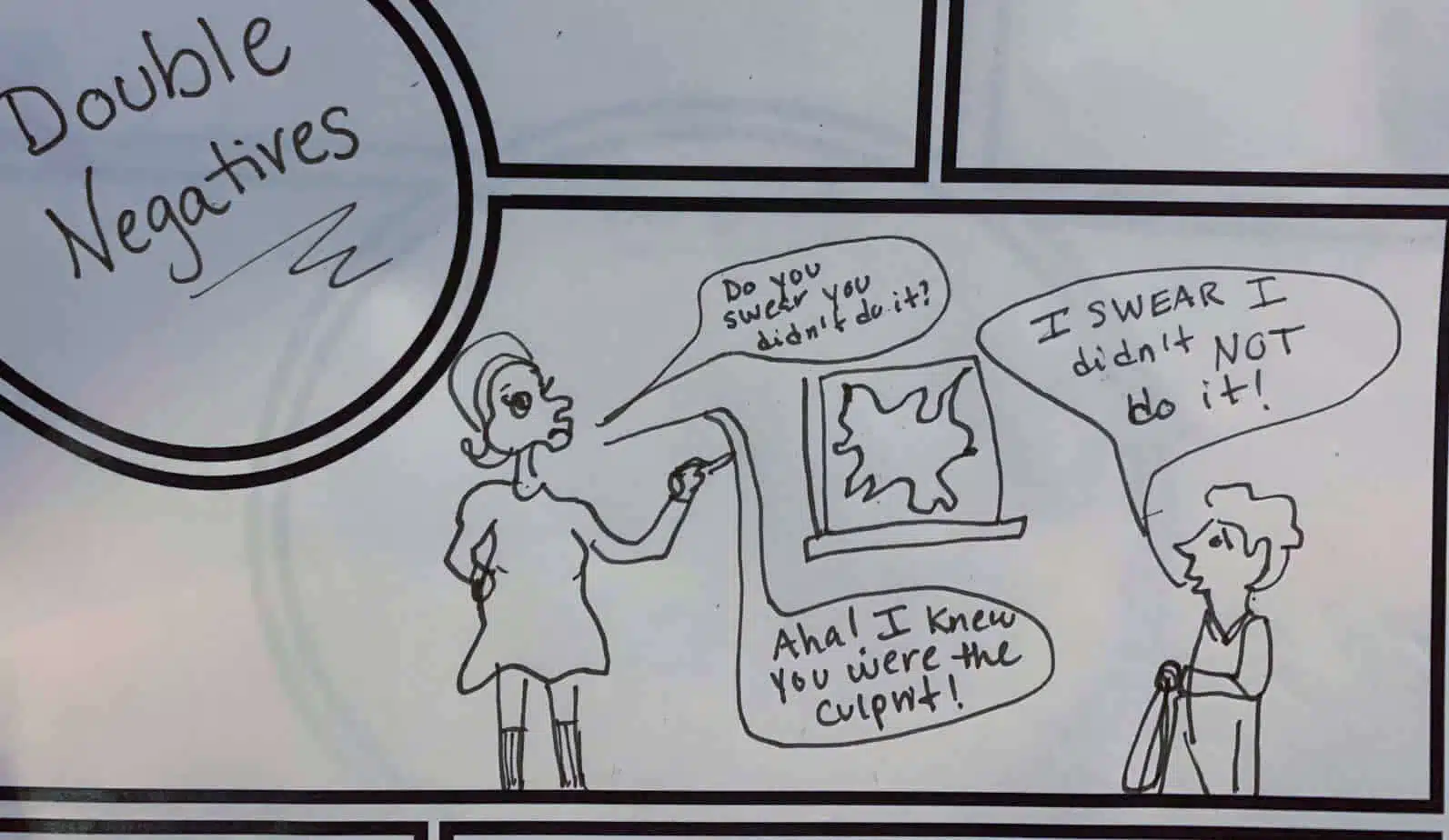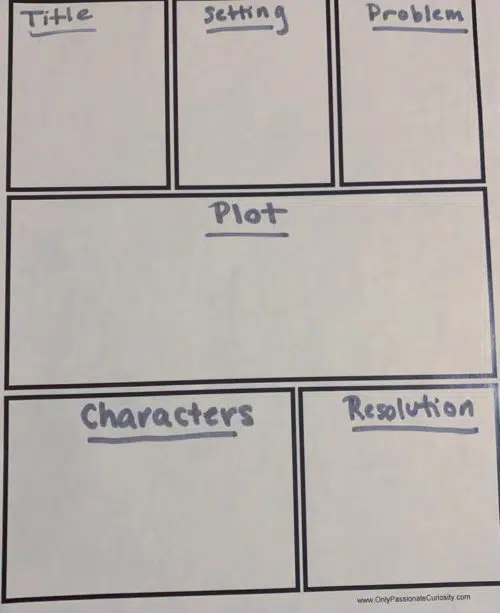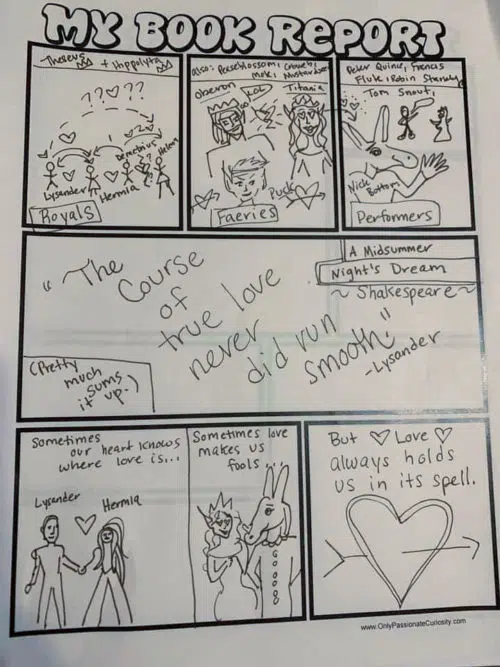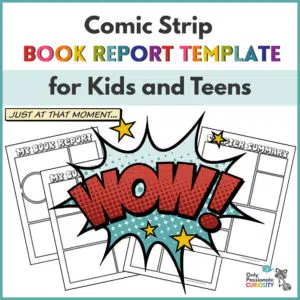Creative Ways to Use Comic Strips in High School Literature
Ways to Use Comic Strips in High School Literature
Comic strips sometimes have a reputation for being less-than-literature, but the reality is that they offer a very unique mode of storytelling that kids and teens are naturally drawn towards.
Today I’m sharing a secret weapon for teaching literature that – especially if you have middle- or high-school-aged students – is going to be a game-changer. And by now you’ve guessed what it is. (Gee, did the title give it away?) Comic strips!
Comic strips are a super-effective, cheap, and fun tool that you can use to make high school English/literature extra creative, fun, and engaging.
While you can definitely use published/written comic books in your English or literature class (there are even some classic works of literature that have been re-imagined in that format), that’s not what this article is about.
Instead, I’m talking about getting older kids and teens to create their own comics. There are several ways to use comic strips in high school literature to make difficult material easier to understand and a lot more fun, too.
Why Comics Help
There are several reasons it can be a good idea to utilize comics with your homeschooled high schoolers. And (confession time) I think these strategies can be just as helpful with younger kids, too. And if you think that older kids or teens won’t like this kind of thing—it’s just not true! Even adults can use comic doodles to make sense of complicated material.
Here are a few reasons I think comic strips can be a powerful superweapon, particularly for older kids and teens.
1. They’re familiar and low-pressure.
Comic strips are a much more laid-back format for expression than some of the more standard forms of high school-level assessment. Why add extra intimidation, particularly if your student happens to get overwhelmed by a particular subject (like literature or English)?
For example, if you have a student who has trouble writing summaries, you may want to use comic strips to guide the summaries instead. Alternatively, you could add comic strips as an assignment in between reading and writing a more formal report. That way, students can use their completed comics as guidelines for more formally-written work. Comic strips can be a low-pressure way for students to organize their thoughts.
2. They’re so much fun, you don’t realize how much you have to think about them.
Comics, by nature, are super-condensed reflections of insight/understanding. You know what they say: “If you want to learn something, figure out how to teach it.” Creating comics is kind of the same deal. You have to understand something really well in order to be able to creatively summarize it in a small space. So even though teens will enjoy the creativity of using comics in their study of English or literature, they will still be effectively challenged, too!
3. Creativity inspires ownership of learning.
Personally, I’m a big believer in utilizing creativity as much as possible in homeschooling (and in life in general!) One reason is that we always learn from creating. We also typically feel pride, ownership, and connection with the things that we create.
When students get to create something as part of their learning experience, they gain a sense of ownership over the things they’ve learned, too! This may have even more impact on teens, who are in a constant process of gaining responsibility, independence, and ownership over their own opinions.
What better time to embrace assignments that nurture creative expression? As a homeschooling alum, I know that educational moments that I remember the most from my homeschooling years were tied to assignments in which I got to apply my learning in a creative way.
A Few Ways to Use Comics in English/Literature
Here are some specific ways you can get your high schooler using comic strips to help make English or literature more fun and accessible! There are endless possibilities, but here are a few of the methods I love.
1. Use comics to illustrate a grammatical concept.
The next time you introduce a new concept in grammar, get your homeschoolers to see if they can think of some real-life examples and turn those examples into comics! This requires your students to understand the concept well enough to “tell a story” with it. However, they will have so much fun being creative that it will seem more like an engaging challenge than an assignment.
In the picture below, the concept is that of the double negative. When the boy says, “I swear I didn’t not do it!” he accidentally says the opposite of what he means to say.
You could use this idea to explore almost any grammatical concept: from prepositions to pronouns to run-on sentences! (Don’t forget to give extra points if it’s funny!)
2. Comics can bring a literary device to life.
Similarly, use comic strips to bring literary devices to life (and make them more fun too)!
These concepts beg for solid examples in order to be properly understood! If you are studying literary devices with your student, you may even want to have him/her create a comic for each one and keep it in a book. Things like metaphors, similes, alliteration, and foreshadowing are much easier to understand when you have a story and image to go with them!
You can get some inspiration on these sites:
- Read this article on mikekerr.com for examples of funny similes and metaphors.
- Learn all about alliteration (See what I did there?) and read some fun examples at Alliteration Examples for Kids. (They work for teens too!)
- And take a look at these great explanations and examples of foreshadowing.
3. Comics make great visual organizers for note-taking or creative writing planning.
Use the boxy format and doodling space of comic strips for a unique type of note-taking space that your student will actually want to use! (This is particularly great if you’ve got a visual learner.)
Are you trying to help your student consistently recognize elements of a story (plot, characters, setting, conflict, and resolution)? Comics can help.
Your students could keep up with each chapter of a book this way. Or they could even plan out their own short stories using this hybrid form of doodling/note-taking. (P.S. Especially if used to keep track of works of literature, this helps tremendously for stories with a lot of characters or confusing character names).
4. Comics can be used as an alternative for a book summary (or even a persuasive essay).
There are a lot of ways to use comic strips in high school literature as an alternative to a larger project, such as a traditional book report or persuasive literary essay.
For example, your homeschooler could:
- Use several pages to create an original, illustrated summary of the work of literature.
- Create different sections for characters and possible themes (as shown below for A Midsummer Night’s Dream). Then, he or she could choose to expand on each theme, choosing sections from the work to illustrate in defense of that point (just like in a persuasive essay, but visual).
- Choose favorite quotes from a particular work to illustrate or re-create as a comic strip scene.
There are so many options, and -honestly- all of them are pretty fun!
I hope this gives you some simple ideas about how you can start using comic strips to teach English or literature with your older child or high schooler!
By the way, you can CLICK HERE to go to an article on our sister site, Only Passionate Curiosity, to download your own comic strip book report template to use with your kids and teens! You’ll also find ideas for how to use the templates.
What do you think about these ways to use comic strips in high school literature? Will you give comic strips a try with your older homeschooler? Let me know what you think or share your own ideas for creative ways to use comic strips!
You May Also Like
Comic Strip Book Report Template for Kids and Teens
5 Easy Ways to Bring Books to Life
Katie Gustafson has been a member of the world of “weird, unsocialized homeschoolers” for a long time–first as an alumnus and now as a homeschooling mom to a fiercely fun little girl! She’s very into anything creative, especially writing, dancing, and painting. She’s also particularly passionate about literature and owns more books than she will probably ever be able to read. However, she reassures herself with the belief that, in the event of a digital apocalypse, she’s cultivating a much-needed physical library for future generations. Katie is happy to contribute articles to Weird Unsocialized Homeschoolers, Hip Homeschool Moms and Sparketh. She also has a personal blog on writewhereuare.com.



